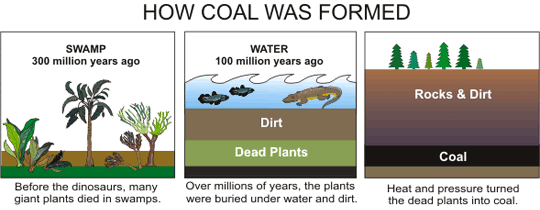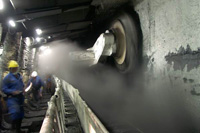Coal: An Introduction
Coal is not derived from marine micro-organisms, but is the compressed and baked remains of land plants. Unlike petroleum (crude oil) and natural gas, coal is often located near the surface and can be extracted from the earth through mining.

Usually when plants die, they rot and oxidize. Ultimately, they turn into carbon dioxide and water. However, if the plants are quickly buried by other plants, sediments from a flood, or in a swamp that has no oxygen dissolved in the water, they do not oxidize and are preserved. Over millions of years, high pressure and temperature drives off both the hydrogen and oxygen from the dead plant material, leaving only the carbon behind. This leftover carbon becomes a coal seam.
The only way to extract the coal from the earth is to establish a coal mine. The design of a coal mine is based on a number of environmental factors as well as the depth and quality of the coal seam. There are two main types of coal mine designs: surface mines and underground mines. In the United States, surface mining is more frequently used since it is less expensive.



1984

2009
